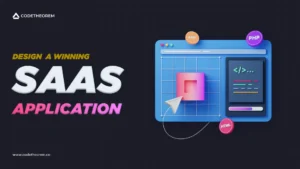Are you new to & confused with the terms – low-code no-code? How to know which one you need?
If your answer is Yes, you’re not alone! So don’t worry.
It’s easy to mix low-code and no-code at first sight. Even the big firms seem to have trouble differentiating between them.
Both no-code and low-code are minimal code platforms. They speed up development. But, they each have their pros, cons, and use cases.
This blog discusses what Low-code No-code (LCNC) platforms are. Their similarities, differences, and the top low-code no-code tools. Besides, you will learn all you need to know before selecting a coding partner.
Let’s dive in!
Article content
- What is Low-code No-code?
- Low-code Vs No-code: Differences & Similarities
- How do Low-code No-code Work?
- How to Choose Between Low-code and No-code?
- Benefits of Low-code No-code Platforms
- Challenges of Low-code Platforms and No-code Platforms
- What are the Best Low-Code No-Code Platforms?
- Is Low-Code No-Code the Future of App Development?
What is Low-code No-code?
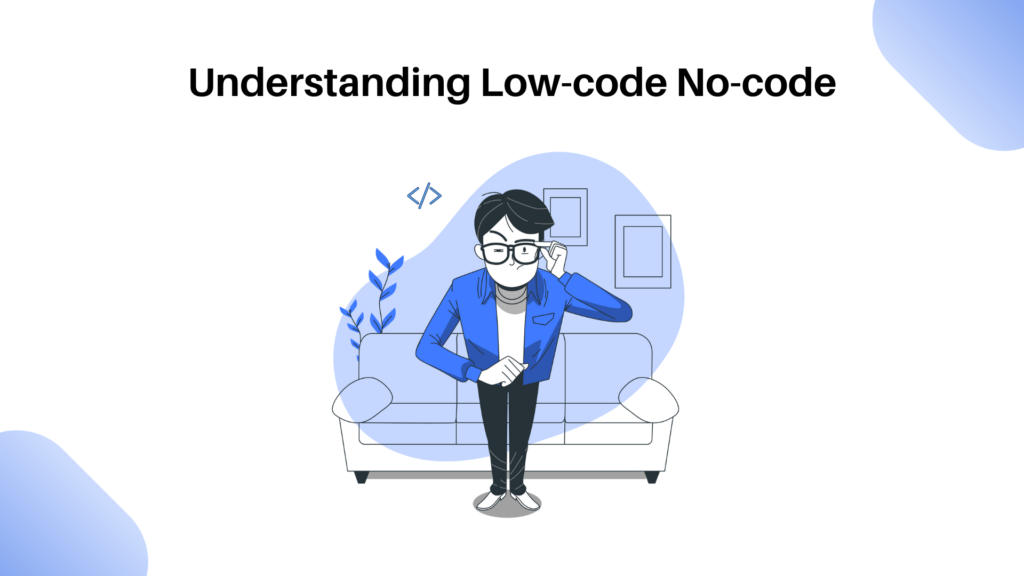
Low-code no-code platforms are becoming popular with designers & developers. There are many causes for the same. Market competition, lack of experienced developers, time constraints and overloaded IT teams are some issues. Let us understand what both terms mean.
What is No-code?
As the name suggests, no-code platforms do not require coding. They don’t need you to write code to create apps. So, you can make an app even if you have no experience.
You can compare no-code apps to popular blogging and e-commerce website creation platforms. For example, Shopify and WordPress. They enable you to create apps using visuals and drag-and-drop tools. You can use the pre-built pages to launch your blog or business. This software is part of the self-service movement. As a result, business users can build data-driven apps and meet their goals.
What is Low-code?
Low-code platforms need some kind of coding. Although, not as much as traditional platforms. But, they are not restricted by repetitious coding or task duplication. Hence, to make an app, you’ll need at least a basic understanding of coding.
The main benefit that users can avail of is the shortcuts. These shortcuts allow skilled users to work smarter and faster. They can simply use visuals with basic drop-down features in a low-code platform. In addition, even non-coders can use these simple methods to make apps. They can build, for example, mobile and business apps.
Low-code Vs No-code: Differences & Similarities
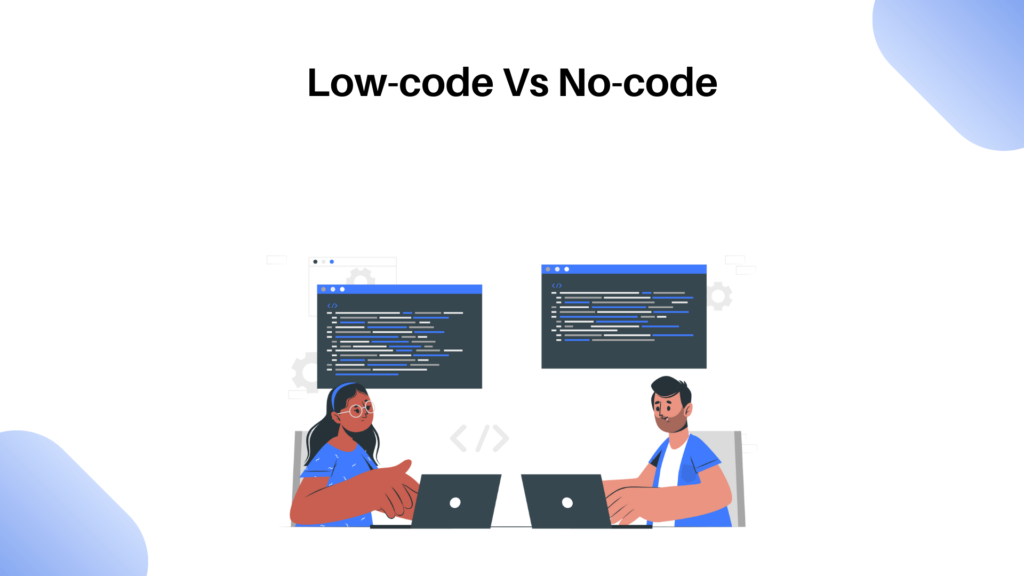
LCNC platforms open up app creation to a broader audience. Additionally, they assist people in creating apps without needing a technical team. The terms LCNC are sometimes used synonymously. But, hundreds of features differ low-code from to no-code. Nonetheless, the majority of them aren’t visible from the UI.
Let’s look at the difference below
| Features | Low-Code | No-Code |
|---|---|---|
| Platform Lock-in | Users are free to move between platforms | Users are sometimes locked into the same platform |
| App Complexity | Can create difficult apps | Can create simple apps |
| Purpose | Next-generation Rapid App creation tool for professional developers | Self-service App for business users |
| Cost-Effectiveness | Cost-effective for businesses with an existing IT team | Cost-effective for businesses having a backlogged IT team and high needs |
How do Low-code No-code Work?
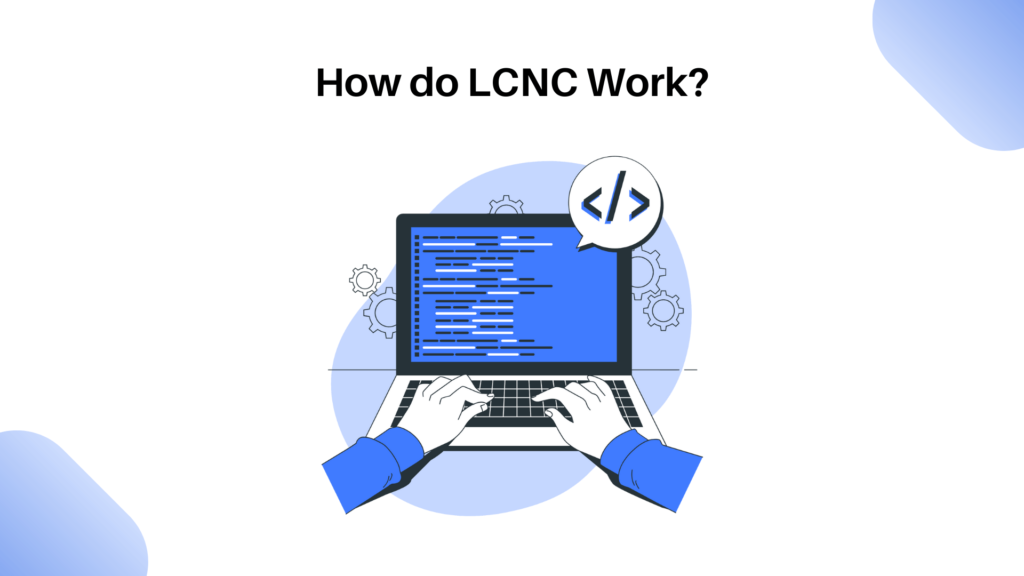
Low-code no-code solutions are perfect for individuals that need to get apps to market fast. Also, they are viable for larger businesses. The concept behind LCNC app creation is to move away from code.
They combine the benefits of moving visual elements of existing code to solve business problems. Users can easily pick and connect reusable code components. They can connect them to create the computerized workflow they want.
When users use the low-code no-code platforms, their efficiency tends to improve. Rather than spending hours coding, they focus on more important business problems.
How to Choose Between Low-code and No-code?
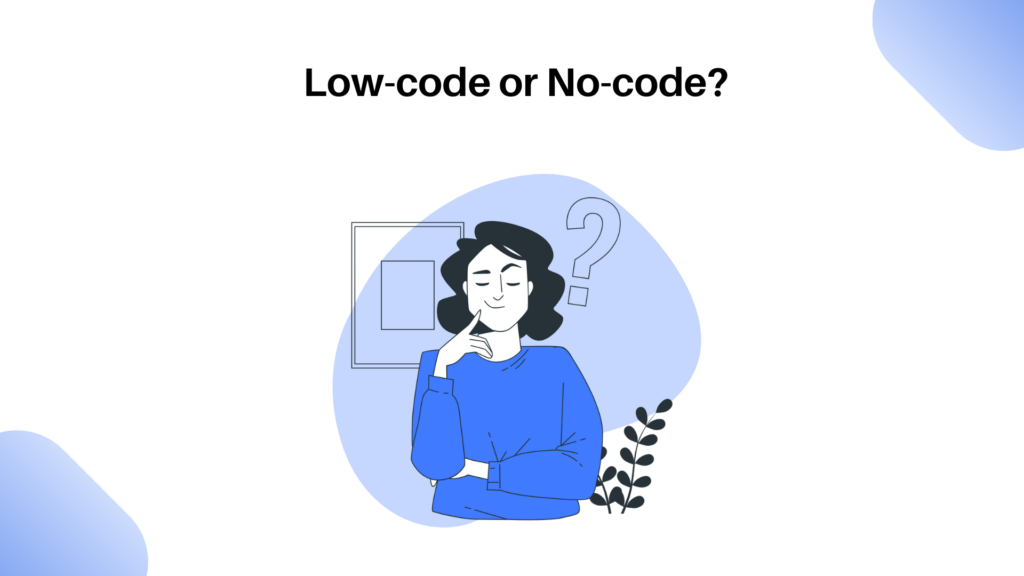
No code is ideal for Designers, whereas low code thrives in the hands of developers. Now the question is, which one to choose?
No-code platforms are too basic to handle complex use cases. But, low-code platforms are tricky for non-professional users. Here is where the difficulty in deciding which path to take arises.
If you use a no-code solution, the rest of the IT industry will label you as shadow IT. Besides, what will you do if your apps outgrow their capacity? What will your team do to sustain them?
In the same way, a low code may allow you to code faster. But does it improve the correctness of the solution? How does it cater to your growing business needs?
There’s certainly more to it than tech when choosing the path. Hence, it would help to check how you’ll align your apps. Understand what users seek, need, and then participate in any app development strategy.
When deciding between both, make sure you consider the below factors.
1. Return On Investment
Low-code no-code solutions need new methods for ROI. “Speed to value” is an important criterion to measure your return. Since both adopt a modular system, they allow you to finish off projects faster. In fact, it might take as little as a few weeks. As a result, LCNC has the potential to deliver value.
As a business, you can provide value by improving the user experience or compliance. You can also enable the faster delivery of new goods or services. Besides, you can speed up your digital transformation goal.
2. Costs
The cost benefits are the most convincing reasons to use low-code no-code platforms. But, pricing is a primary consideration in many cases. So, choosing a partner need great care and attention. Especially for the first contract.
3. Right Infrastructural Fit
Low-code no-code platforms aren’t stand-alone client-side tools. You do not need to fit them into your business ecosystem. In fact, it’s a simple business plan. Low-code makes it simple to connect software. You can also leverage new technologies like AI, ML, and blockchain.
For instance, a person wishes to start small. They must ensure that their low-code partner allows for future growth.
4. Safety and Security
IT teams must remain active in security, creating and maintaining the guardrails. It ensures the safety of low- and no-code apps. When used internally, these solutions may not be harmful. On the other hand, they are widely used in public-facing apps. Hence, it needs the deployment of user-built apps within a framework. It includes best practices like approval and authentication processes and data encryption services.
Benefits of Low-code No-code Platforms
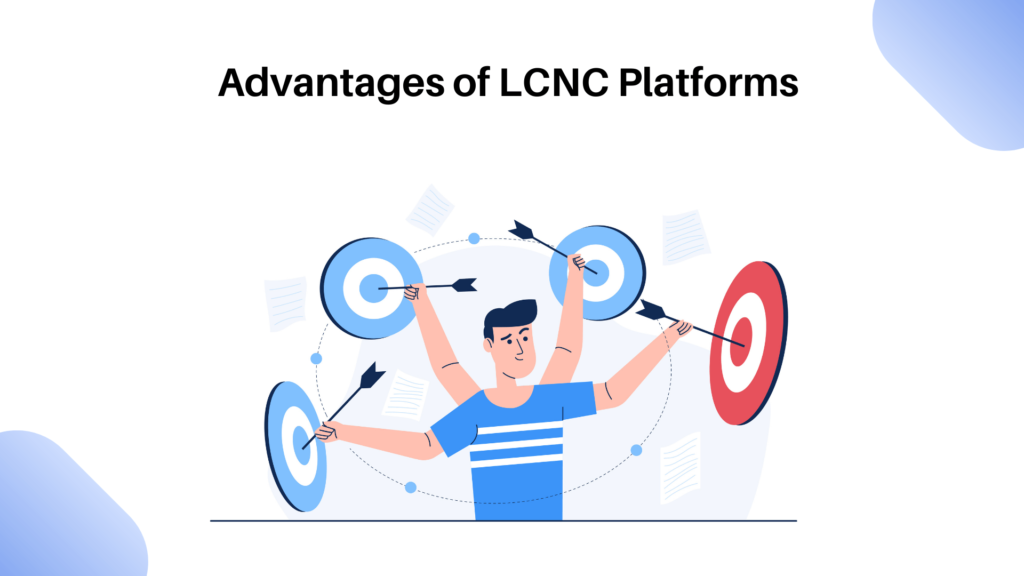
Low-code No-code platforms help tech-enthusiasts to create and deploy apps quickly. They do not have to worry about operating systems or scalability. Low-code no-code is ideal if you need a quick solution to handle a particular business problem. Moreover, also when you don’t want to wait 3-6 months to create and deliver apps.
Here are some of the benefits of low-code no-code platforms.
1. Improved Customer Experience
A solid user experience (UX) is an important part of creating an app for any product. It helps businesses to improve their customer retention by meeting their requests and expectations. Low-code and no-code help people provide an amazing UI to their customers.
2. Quicker Deliveries
Low-code no-code reduces the coding and removes complex issues from the process. As a result, they enable users to design and deliver apps at a much faster rate. Besides, the low-code no-code platforms also make it possible to merge third-party tools. The teams are already familiar with them, reducing or removing the learning curve.
3. Agile and Flexible Solutions
Low-code no-code platform’s ability to adapt and give variation is a huge benefit. Besides, it enables users to distribute their products across all major platforms. Customers use a variety of means to access the internet. Thus, it would help if you designed compatible apps. The availability and usage ensure that your offering is reachable to all clients.
4. Reduced Costs
Another benefit of making a product with low-code no-code is fewer costs. It saves money and resources. Minimal coding reduces the IT team’s complexity and burden. Also, low-code no-code needs the least training. As a result, anyone in your team can create an app. The expense approval app is a typical example of a workflow management app.
5. Increased Efficiency
Low-code no-code helps users enhance their productivity. They can speed up the design and delivery of apps. Also, people can finish the entire project quickly with a low-code no-code platform. They do not need to spend months collaborating with an app creation team.
Challenges of Low-code Platforms and No-code Platforms

With the introduction of LCNC platforms, you are no longer bound by lengthy development cycles. But, the platforms may not be able to suit all your needs. It’s critical to know of the below-hidden downsides while choosing a platform.
1. Limited Freedom
One of the concerns of low-code platforms is vendor lock-in. Many LCNC platforms do not allow moving the code/ product from one LCNC platform to another LCNC platform. Hence, it’s important to understand the policies before partnering with a platform. You must be sure that you will sustain apps outside of the platform.
2. Security Concerns
The most crucial worry with low-code no-code is the safety of the underlying data. Some people may wish to limit the usage or the type of knowledge provided. But, it depends upon the platform to platform. Yet, many top-tier, enterprise-grade providers provide many control options for enterprises.
3. Lack of Customization
Customization choices differ from platform to platform. Some low-code no-code platforms limit altering possibilities, while others access the source code. Likewise, some will allow you to design tailor-made apps, while others will not. So, make sure you know your limitations before partnering with any platform.
4. Rigid Templates and Components
Low-code platforms include many templates and components. Users should adjust them to meet a set of use cases while building an app. Yet, there are situations when you cannot apply that business logic due to a lack of building blocks. You are often unable to get that edge in your app.
5. Limited Integration Options
No-code platforms focus on operational efficiency. Hence, they cannot focus on one user experience and link to older systems. It hinders the integration options for users. Besides, the provider does not allow custom integrations for third-party or in-house systems.
6. Governance
On these low-code platforms, app creation might pose some governance issues. It can be difficult due to the stand-alone nature of no-code apps. Moreover, unmanaged data formats and levels of data quality can spread widely. For a successful governance approach, you must consider the user’s identity and the technology.
What are the Best Low-Code No-Code Platforms?
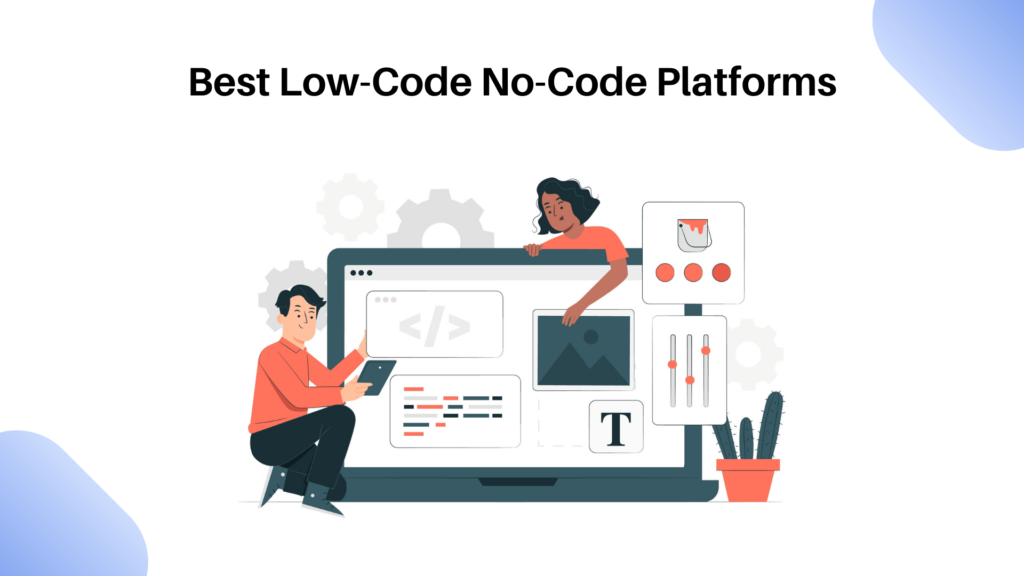
Low-code and no-code platforms provide a quick and straightforward alternative to the old app development. Hence, they’re getting a lot of attention.
Let’s look at the top five low-code and no-code platforms for the people below.
1. Salesforce
The platform has a long history of building apps. It focuses on non-tech business users. Besides, its low-code solutions are no different.
Salesforce Platform includes all the tools for creating business apps. Also, users can publish apps to app stores using the platform’s Mobile Publisher.
Force.com, the vendor’s platform, was first released in 2008. It allows third-party users to create Salesforce apps. Users can use tools like Flow Builder to automate business operations. Also, users can choose which tools and services to use on the platform. Finally, Salesforce also boasts a huge community.
2. OutSystems
OutSystems is an excellent low-code tool that caters to the growing demand for ongoing delivery. Its solutions use AI to help users make apps in a visual environment. Furthermore, it gives permissions for usage based on roles. Thus, allowing users to grow at their own speed. For example., from professional to citizen developers.
Its platform services automate the app creation lifecycle in OutSystems. The platform uses templates and custom apps as well.
You can use a library of UX components, drop-down UI, business processes, logic, and data models. Additionally, you can develop cross-platform apps readily on the platform.
TrueChange, an OutSystems feature, removes the guesswork and manages app changes effectively. It also checks for bugs and errors.
3. Microsoft Power Apps
The platform helps people create rich web and mobile apps. It is built on Microsoft’s Common Data Service. Here, you can create many apps at the same time.
Additionally, the platform solution is connected to important data. The business information is stored in the underlying data platform or other online data sources.
The tool PowerApps Studio is ideal for creating canvas apps. Besides, it makes apps more like working on a PowerPoint slide deck.
4. Appian
Appian is a low-code platform for all types of businesses. It is a single platform focusing on automating complex workflows. It helps users to build BPM apps. For example, robotic process automation, case management, AI, and decision rules.
Users can connect with other team members to discuss projects using Appian’s social collaboration tool. The platform also provides pre-built connectors to merge with other apps. For this, you do not need to write any code.
Data and analytics are also available for document management.
Appian-developed apps combine AI from AWS, Azure, and Google. The process modeler provides real-time AI help. Hence, allowing it to use AI as a low-code tool.
The platform also uses ML to suggest the next steps in app creation. Thus, avoiding the use of third-party services.
5. ServiceNow
ServiceNow is a leader in low-code platforms. The platform allows anyone to automate, extend, and build digital workflows. Its apps and frameworks are open to users at all levels.
Besides, users can build the apps on its Now Platform. The platform provides a great app structure. Thus, it eases app creation for different business operations.
It has also grown its reach beyond the Data Centre. It introduced a Guided App Creator for non-technical business users. So, it will assist them in building apps on the Now Platform. The tool also speeds app creation to improve user experience.
The Now platform’s Integration Hub is a no-code integration environment. It supports pre-built tools for other systems. Besides, it automates and merges business processes.
Additionally, you can read our in-depth blog on the 15 best no-code platforms with pricing and features
Is Low-Code No-Code the Future of App Development?
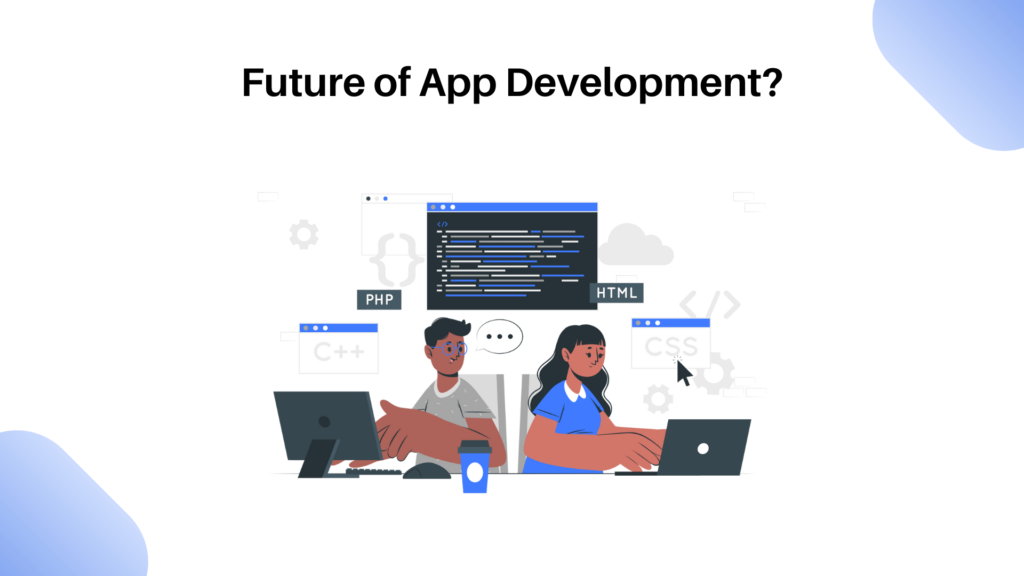
The short answer to the above question is – Yes! As per Business Wire, the future is low-code no-code. In fact, the forecasts suggest a 44.4 percent growth rate to $27.23 billion by 2022. Low-code and no-code solutions are becoming crucial in speeding up app delivery. We see new platform features, updates, and solutions released every day. Indeed, they fill the gap between what a non-coder and what a full-fledged coder can do.
In the future, users will use these tools to build more and more apps. Moreover, it will be necessary for growth across all functions. Yet, both platforms are unlikely to replace traditional development completely. Sure these tools help in building a mobile app fast. But, they don’t make it simple to deploy apps across a whole company.
Conclusion
The convenient, less expensive, and efficient low-code no-code solutions have all of our attention. No code low code has already started marking its place in the development arena and there’s no stopping that. They have proved that you don’t need to be a developer to build efficient and user-friendly applications and websites in no time!
















